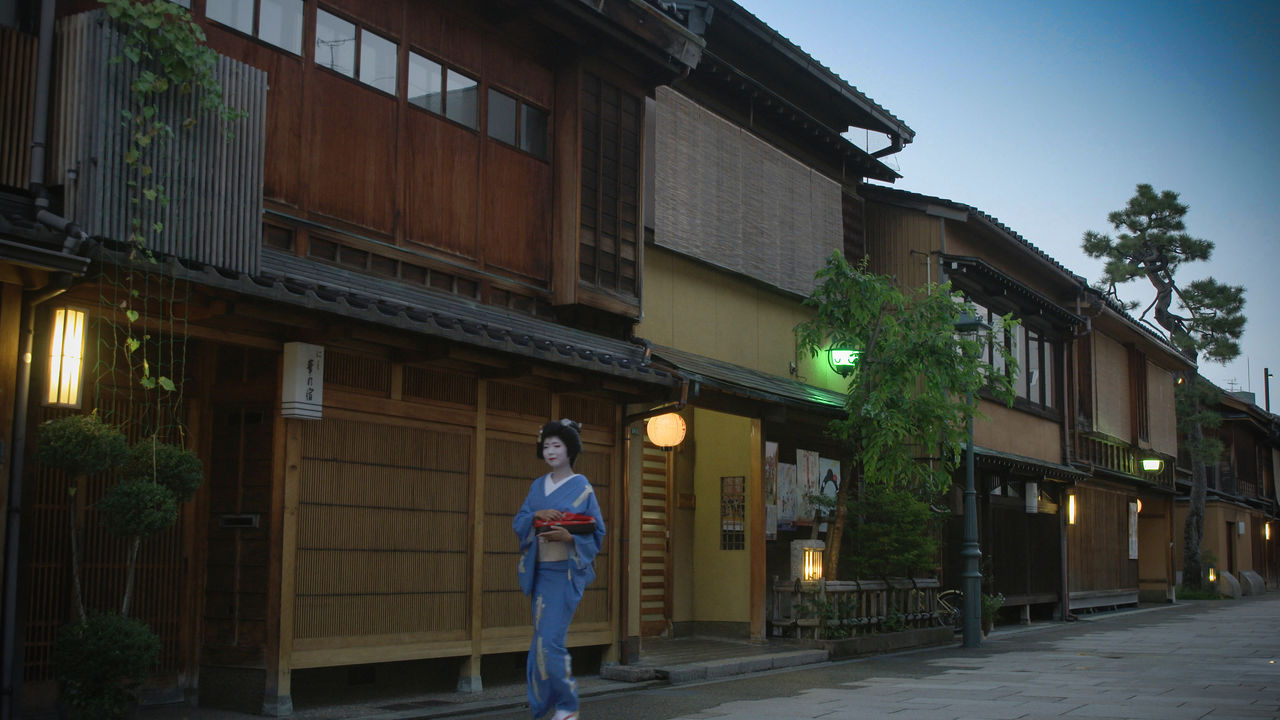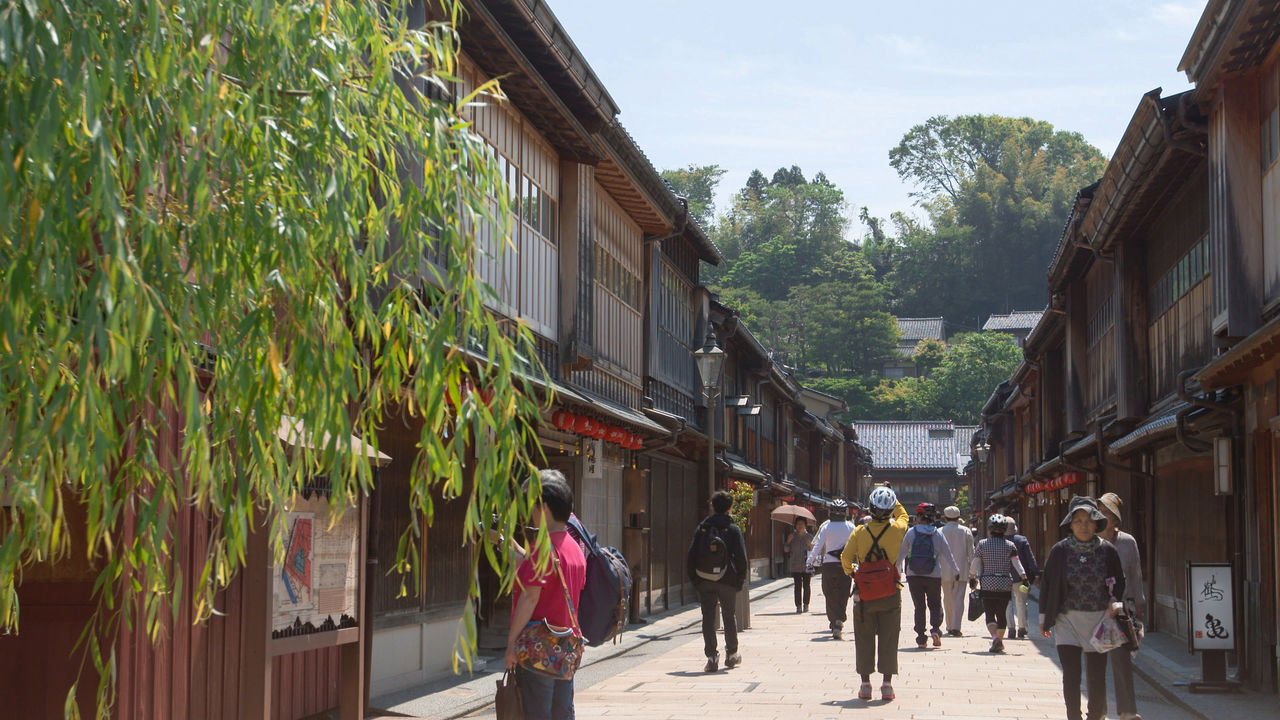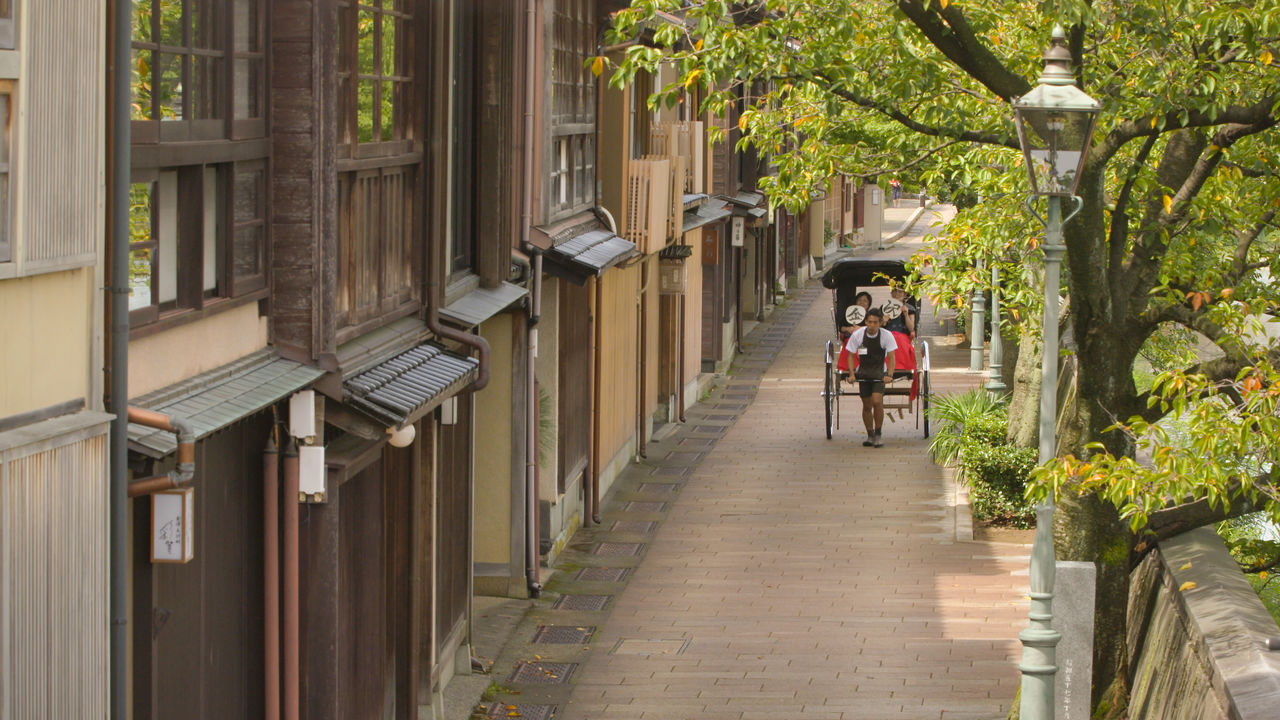
Kanazawa’s “Chayagai” Teahouse Districts Preserve the Culture of the Kaga Domain (Video)
JapanIn video
Guide to Japan- English
- 日本語
- 简体字
- 繁體字
- Français
- Español
- العربية
- Русский
Traditional Culture of Hospitality Lives On in the Chaya Districts
Tradition and refinement live on in the three entertainment districts—Higashi, Kazuemachi, and Nishi—patronized by the wealthy gentlemen of Kanazawa since the Edo period (1603–1868). The Higashi Chaya District was the first of the three, established in 1820 by Maeda Narinaga, the twelfth daimyo of the Kaga domain as a chayagai, or teahouse district.
 The Higashi Chaya District is a must-see for tourists.
The Higashi Chaya District is a must-see for tourists.
The teahouses in the Higashi Chaya District feature traditional architectural touches like kimusuko wooden screens, which keep prying eyes away but allow occupants indoors to see out. This streetscape was designated an important cultural property in 2001. It’s one of Kanazawa’s most popular areas for tourists, and many of the structures here house souvenir shops or cafés today.
 Kimusuko wooden screens make it difficult to peer in but easy to see out.
Kimusuko wooden screens make it difficult to peer in but easy to see out.
The Kazuemachi Chaya District lies along the Asano River, which also takes the name Onna-gawa, or “the female river.” This district was created when many establishments, such as shared communal quarters for geiko, as geisha entertainers were known here, began gathering around 1869. Kazuemachi takes its name from Toda Kazue, a key retainer to the Kaga lords whose estate was situated here. In 1999, the district became in the first in Japan to regain the traditional name it bore prior to the replacement of many feudal-era names that accompanied the modernization of Japan’s local administrative systems in the late nineteenth century. In 2008, it followed the Higashi Chaya District in being designated an important cultural property.
 The Kazuemachi Chaya District stretches along the Asano River.
The Kazuemachi Chaya District stretches along the Asano River.
One street in from the river are narrow lanes that are dim even in daytime. One of these is Kuragari-zaka, where the footsteps of patrons echoed as they climbed up and down the slope on their way to the teahouses there. At the top lies Shimoshinchō, the district where the celebrated local writer and playwright Izumi Kyōka (1873–1939) was born and raised. His works often mentioned the Kazuemachi of older times.
 The Kuragari-zaka slope is one street in from the Asano River.
The Kuragari-zaka slope is one street in from the Asano River.
South of the Sai River, sometimes referred to as Otoko-gawa, or “the male river,” is the Nishi Chaya District, which, like the Higashi Chaya District, came into being in 1820 as an entertainment area officially recognized by the Kaga domain authorities. The geiko from the Nishi Chaya District have traditionally been considered the most enterprising among their sister entertainers.
 The Nishi Chaya District boasts the largest number of geiko.
The Nishi Chaya District boasts the largest number of geiko.
Visitors strolling through the three teahouse districts can hear snatches of shamisen and hand-drum music drifting in the air, evidence that the artistic traditions of Kanazawa are alive.
(Originally written in Japanese. Created in cooperation with Kanazawa Cable Television. Banner photo: A geiko walking in the Nishi Chaya District.)